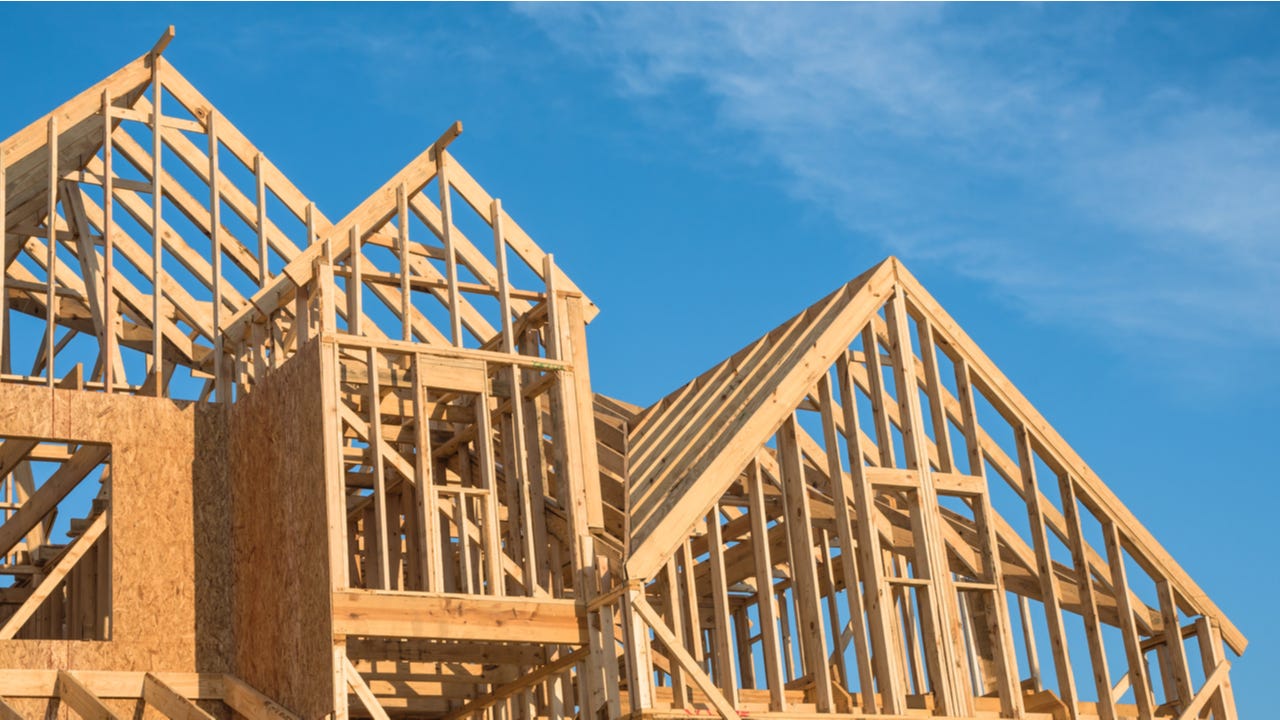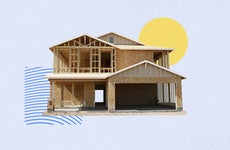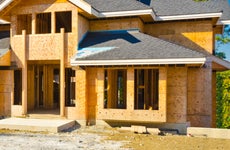We are an independent, advertising-supported comparison service. Our mission is to empower you to make more informed financial decisions by giving you access to interactive tools and financial calculators, publishing original and unbiased content, allowing you to conduct free research and information comparisons, and publishing original and objective content. Partnerships between Bankrate and issuers like American Express, Bank of America, Capital One, Chase, Citi, and Discover are just a few examples.
How We Make Money
The offers that show up on this website are from businesses that pay us. This compensation may have an effect on the placement of products on this website and other factors, such as the order in which they may appear within listing categories. However, the information we publish or the user reviews you see on this website are unaffected by this compensation. We exclude the full range of businesses and financial opportunities that may be available to you.

At Bankrate, we work to guide you toward making more informed financial decisions. Although we follow strict guidelines, this post may mention products from our partners. Heres an explanation for . Bankrate logo.
Bankrate, which was established in 1976, has a long history of assisting people in making wise financial decisions. By demystifying the financial decision-making process and empowering people to know what to do next, we’ve maintained this reputation for more than 40 years.
You can trust that Bankrate adheres to a strict editorial policy and is acting in your best interests. Our content is written by highly qualified professionals, and it is edited by specialists in the fields in which it is published, ensuring that it is impartial, truthful, and reliable.
For you to feel confident when making decisions as a homebuyer and homeowner, our mortgage reporters and editors concentrate on the topics that consumers care about most, such as the most recent rates, the top lenders, navigating the home-buying process, refinancing your mortgage, and more. Bankrate logo.
You can trust that Bankrate adheres to a strict editorial policy and is acting in your best interests. Our esteemed editors and reporters produce truthful and accurate content to assist you in making wise financial decisions.
We value your trust. Our editorial standards are in place to ensure that we fulfill our mission of giving readers accurate and unbiased information. To make sure the information you’re reading is accurate, our editors and reporters conduct extensive fact-checking on editorial content. Our editorial team and advertisers are separated by a wall that we uphold. Our editorial staff does not get paid directly by our advertisers.
The editorial staff at Bankrate writes on behalf of YOU, the reader. Our aim is to provide you with the best guidance so that you can make wise decisions regarding your personal finances. To prevent advertisers from influencing our editorial content, we adhere to strict guidelines. Our editorial staff is not paid directly by advertisers, and all of our content is meticulously fact-checked to ensure accuracy. So, whether you’re reading an article or a review, you can be sure that the information is reliable and trustworthy. Bankrate logo.
How we make money
You have money questions. Bankrate has answers. For more than 40 years, our experts have been assisting you in becoming financially savvy. We continuously work to give customers the knowledge and resources necessary to be successful in their financial endeavors.
You can rely on Bankrate’s editorial standards to produce truthful and accurate content. Our esteemed editors and reporters produce truthful and accurate content to assist you in making wise financial decisions. Our editorial team produces factual, unbiased content that isn’t influenced by our advertisers.
We are open and honest about how we earn money in order to provide you with high-quality content, affordable prices, and practical tools.
Bankrate. com is an independent, advertising-supported publisher and comparison service. We receive payment in exchange for the placement of sponsored goods and services on our website or when you click on specific links there. As a result, this compensation may affect the placement, timing, and order of products within listing categories. A product’s availability in your area or within your self-selected credit score range, among other things, may have an impact on how and where it appears on this site. Bankrate does not provide information on every financial or credit product or service, despite our efforts to do so.
If you are unable to find the ideal home to purchase, you may be considering the price of either building a new home or renovating the one you already own. Obtaining a mortgage to purchase an existing property is not the same process as borrowing money to fund this project. Here is all the information you require regarding obtaining a construction loan.
What is a construction loan?
A short-term, higher-interest loan called a “home construction loan” is used to pay for the construction of a residential building.
Construction loans typically are one year in duration. The building must be constructed during this time, and an occupancy certificate must be issued. Lightbulb Construction loan statistics.
How do construction loans work?
Most construction loans have variable interest rates that fluctuate in line with the prime rate. Rates on construction loans are typically higher than those on conventional mortgage loans. Your home serves as collateral for a traditional mortgage, meaning that the lender may seize it if you fall behind on your payments. The lender doesn’t have that option with a home construction loan, so they typically view these loans as carrying higher risks. The typical interest rate range for construction loans is between 5 and 10 percent, typically 1 percentage point higher than the typical mortgage rate.
Typically, the initial loan term corresponds to the duration of your construction project. You must give the lender a construction timeline, in-depth plans, and a reasonable budget because construction loans have such a tight timeline and are reliant on the project’s completion.
Once the house is built, depending on the type of construction loan you have, you might be able to convert it to a conventional mortgage. This is known as a construction-to-permanent loan. You might be required to obtain a different mortgage intended to pay off the construction loan if the loan is only for the construction phase.
Differences between construction loans and traditional mortgages
There are a few key distinctions between construction loans and mortgages, in addition to price and repayment schedules:
Types of construction loans
With a construction-to-permanent loan, you take out a loan to cover the cost of building your home, and once it is finished and you move in, the loan is transformed into a permanent mortgage.
You only have to pay one set of closing costs when using the construction-to-permanent method, which lowers your overall fees.
Janet Bossi, senior vice president at OceanFirst Bank in New Jersey, says that there will be a single closing so that there won’t be any additional settlement costs.
The loan turns into a traditional mortgage once the construction-to-permanent shift takes place, typically with a loan term of 15 to 30 years. You then make payments that cover the principal and interest. You can then choose between a fixed-rate and an adjustable-rate mortgage. Other choices include a VA construction loan if you’re a qualified veteran, or an FHA construction-to-permanent loan with less-stringent approval requirements that can be especially helpful for some borrowers.
The money needed for the home’s construction is provided by a construction-only loan, but the borrower is responsible for either repaying the loan in full when it matures (typically in one year or less) or obtaining a mortgage to secure long-term financing.
The borrower is only responsible for making interest payments on the money drawn from these construction loans, which are disbursed based on the percentage of the project that is completed.
If you need a permanent mortgage, construction-only loans may end up costing more because you have to complete two separate loan transactions and pay two sets of fees. Closing costs typically run into the thousands of dollars, so avoiding another set of
Another thing to keep in mind is that the construction process may make your financial situation worse. You might not be eligible for a mortgage in the future if you experience a job loss or another hardship, which would prevent you from moving into your new home.
You can compare home renovation loan options if you prefer to renovate an existing home to building one. Depending on how much money you’re investing in the project, these come in a variety of forms.
“If a homeowner is looking to spend less than $20,000 on the renovation, they could consider getting a personal loan or using a credit card to finance the project,” said Steve Kaminski, head of U S. Residential Lending at TD Bank, says. If the homeowner has accumulated equity in their home, a home equity loan or line of credit may be appropriate for renovations costing up to $25,000 or so. ”.
A cash-out refinance, in which a homeowner takes out a new mortgage for a higher amount than their existing loan and receives the difference in a lump sum, is another viable choice in a low mortgage rate environment. As rates tick up, though, this option becomes less appealing.
The lender typically does not demand disclosure of how the homeowner will use the funds with any of these choices. The homeowner manages the budget, the plan and the payments. With other types of financing, the lender will assess the contractor, examine the spending plan, and manage the draw schedule.
Construction-to-permanent or construction-only loans with owner-builder status are those where the borrower also serves as the home builder.
Due to the difficulty of building a home and the expertise necessary to comply with building codes, the majority of lenders won’t permit the borrower to act as their own builder. If a lender does, they frequently only permit it if the borrower is a certified builder by profession.
Once the building is complete, Kaminski explains, an “end loan” is simply the homeowner’s mortgage. When construction is underway, a construction loan is taken out and repaid afterward. After that, the borrower will have to pay back their regular mortgage, also known as the end loan.
A construction-to-permanent loan, which requires just one loan closing, is not something that all lenders offer. Some need an end loan or a second closing to switch to a permanent mortgage, according to Kaminski.
What does a construction loan cover?
A construction loan can be used to pay for a variety of things, such as:
According to Kaminski, it’s crucial to go over these matters with your lender, particularly what will be considered in your loan-to-value calculation.
According to Kaminski, “contingency reserves are frequently included in construction loans to cover unforeseen costs that could arise during construction, serving as a cushion in case the borrower decides to make any upgrades once the construction begins.” Once the plans are laid out, it’s not unusual for a borrower to want to raise their countertops or cabinets.
Other costs to build a house
More than just the materials and labor needed to erect the structure itself go into the cost of building a home. Fortunately, the price of enduring fixtures like landscaping and appliances can frequently be covered by the loan amount. On the other hand, a construction loan out does not cover home furnishings. ”.
The companies that offer construction loans usually require borrowers to:
How to get a construction loan
Obtaining a construction loan may resemble the process of getting a mortgage, but getting approved to start construction on a new house is a little trickier. In general, you should adhere to these four steps if you’re unsure how to obtain a construction loan:
Get homeowners insurance: Your lender will probably insist on a pre-paid homeowners insurance policy that includes builder’s risk coverage even if you don’t yet reside in the house. This way, you are safeguarded in the event that something unfortunate occurs while construction is ongoing, such as a fire breaking out or vandals damaging the partially completed property.
Factors to consider about construction loans
Asking yourself these important questions prior to applying for a construction loan
Could your project face significant timeline issues?
Talk to your contractor and discuss the timeline of building the home and if other factors could slow down the job. Keep in mind there are still bottlenecks plaguing production, which first started with pandemic supply-chain disruptions and still persist. Be prepared for material prices to stay high, especially in light of inflation, and ongoing shortages to affect your project.
Do you want to simplify the borrowing experience?
Make a decision regarding whether you want to go through the loan process twice with a construction-only loan or three times with a construction-to-permanent loan. Think about how much the project will cost you in closing fees and other fees if you get more than one loan.
When applying for a construction loan, it’s possible that you’ll also need to consider buying the land and figuring out how to pay the remaining balance after the house is built, perhaps with a permanent mortgage. Then, to avoid multiple closings, a construction-to-permanent loan may make sense. However, if you already own a home, you might be able to use the money to reduce your debt. A construction-only loan might be a better option in that situation.
What is the drawing process from your construction loan?
Find out from your lender how the money from your loan is distributed. Some lenders permit monthly withdrawals, while others won’t permit one until an inspection has been successfully completed. Find out if there are any procedures or paperwork necessary to withdraw funds from your construction loan so that your contractor can use them.
Understanding this procedure and making sure your contractor is familiar with it can help you avoid delays brought on by a lack of funding.
How to find a construction loan lender
To ensure you’re getting the best deal for your circumstances, speak with a number of knowledgeable construction loan lenders to learn more about their specific policies and programs. You should also compare construction loan rates, terms, and down payment needs.
Find a lender who specializes in construction lending and is experienced with the procedure, advises Bossi, because construction loans are more complicated than regular mortgages.
Check out smaller regional banks or credit unions if you’re having trouble finding a lender who will work with you. If you can demonstrate that you’re a good risk or, at the very least, have a connection they can refer you to, they might be more accommodating in their underwriting.




FAQ
Which loan is best for home construction?
- Best overall: Magnolia Bank’s Nationwide Home Loans Group
- Best for Bad Credit Scores: FMC Lending.
- Best for First-Time Buyers: Nationwide Home Loans, Inc.
- Best Online Borrower Experience: Normandy.
- Best for Low Down Payments: GO Mortgage Corporation.
What credit score do banks use for construction loans?
Additionally, avoid making any significant purchases in the months leading up to your construction loan application. For a loan to be considered, the majority of lenders typically require a credit score of 680 or higher.
Is a construction loan cheaper than a mortgage?
Most construction loans have variable interest rates that fluctuate in line with the prime rate. Rates on construction loans are typically higher than those on conventional mortgage loans.
Is it harder to get a construction loan than a mortgage?
According to Moralez and Thomas, obtaining approval for a construction loan is more difficult than for a typical purchase mortgage. Because there isn’t an asset to use as collateral for the mortgage, the bank is taking on more risk during the construction phase. Typical down payments are around 20%.
